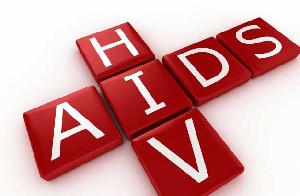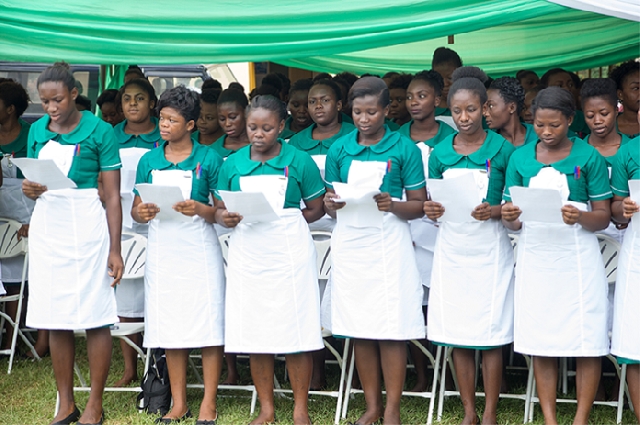Nigeria’s high infant HIV infection rate

Despite new claims of a significant reduction in national Human Immunodeficiency Virus/Acquired Immune Deficiency Syndrome prevalence rate in Nigeria, it is quite mortifying that the country still tops the mother-to-child transmission rate in the world. This is evidence that a lot needs to be done before the epidemic can be brought under firm control. With global target set at 2030 for the elimination of the virus, it is doubtful if the country is ready to achieve that goal.
The Minister of State for Health, Olorunnimbe Mamora, who dropped the bombshell about the poor standing in her HIV/AIDS containment efforts in Abuja recently, has however promised that efforts would be made to provide the resources needed for the prevention and treatment of the disease. This is the right thing to do. But, given that similar promises made in the past had gone unfulfilled, is there anything on the ground to indicate that things would go differently this time?
In 2015, the National Agency for the Control of AIDS had, likewise, warned that Nigeria had the dubious distinction of harbouring the highest number of children living with HIV/AIDS in the world. That was the warning that should have been heeded and the necessary steps taken to stop the spread. However, almost five years after, that trend has not been reversed. Nigeria, despite being behind some other countries in the national prevalence rating, leads the world in the transmission of the disease from mother to child.
Frankly, the current HIV status is not surprising for a country with a dysfunctional health system, where the health infrastructure is in an advanced state of decay and the political leaders prefer to seek treatment abroad for any ailment or discomfort. Nigeria, for the past 18 years, has been earmarking between four and seven per cent of the national budget for health, despite an agreement by African countries in Abuja in 2001 that pegged it at a minimum of 15 per cent. It is also a country where medical doctors are fleeing in droves over perceived unfavourable working conditions.
What is so dispiriting about the mother-to-child HIV transmission rate is the fact that it can be easily controlled, resulting in a considerable reduction. Medical science has advanced to the level where drugs could be offered at the hospital to an expectant mother during the periods of pregnancy and childbirth and, in many cases, have the child delivered through a scheduled Caesarean section to prevent the infected mother from transmitting the disease to the child during delivery. This has been made possible by the discovery of antiretroviral drugs, which now ensures that HIV is no longer a death sentence.
NACA explains that children born by women infected with HIV should be placed on drugs for the first six months of life to protect them from infection or, at worst, to reduce the risk of infection; not forgetting that the drugs taken by the mother could also work for the baby as it is transferred to the unborn baby through the placenta. “This transfer of HIV medicine protects the baby from infection, especially during a vaginal delivery when the baby passes through the birth canal and is exposed to any HIV in the mother’s blood or any other fluid,” NACA explains.
To further consolidate the process, the United States Centres for Disease Control and Prevention forbids mothers from breastfeeding their children to forestall the possibility of the babies contracting the infection through their mothers’ breast milk. That is why it is important that every pregnant woman should register for antenatal care, where she would be tested to determine her status.
However, if this is all that it takes to prevent HIV transmission during childbirth, why should Nigeria find it so difficult to reduce the rate of infection of infants? The government has to show more commitment to the fight to contain HIV, which may not have a cure yet, but could be kept in check by ensuring that every infected Nigerian has access to retroviral drugs. The drug has the capacity to bring down the viral load in an infected person to the state of viral suppression, a stage where the virus can no longer be transmitted.
Recently, Nigeria celebrated the drop in national prevalence among those between the ages of 15 and 49 years. From a previous estimate of 2.8 per cent, the last Nigeria National HIV/AIDS Indicator and Impact Survey released in March put the national prevalence at 1.4 per cent. But what has been generally hailed as significant progress in this area has been made possible, in the main, by foreign donors who, according to the immediate past Director-General of NACA, Sani Aliyu, have been responsible for 95 per cent of the sponsorship. He said the government treatment programme only covered two states, while foreign donors covered the rest and Abuja.
For the country to get close to meeting the 2030 target, there should be a scale-up in testing so that more people can know their status. Immediately a person tests positive, then such a person should start treatment so as to suppress the viral load and stop the spread. The government has to ensure that as many people as possible are covered in the treatment programme. As long as the programme does not accommodate all the infected people, it will be difficult to control the virus. Reducing the national prevalence will ultimately lead to a reduction in mother-to-child transmission.
Source: www.punchng.com





